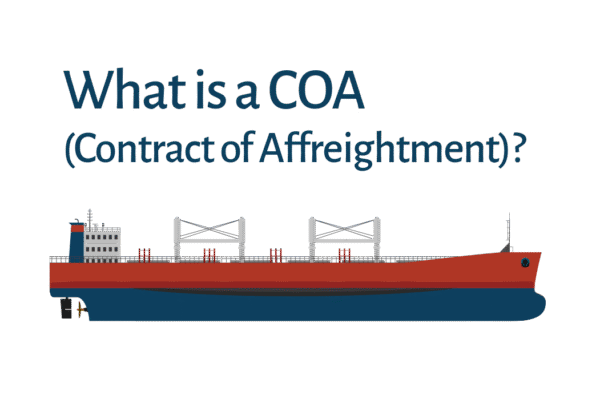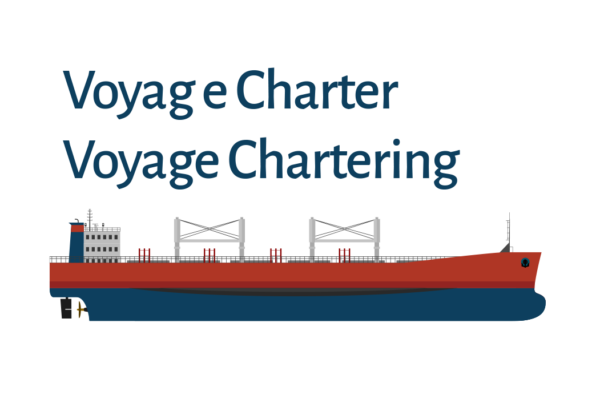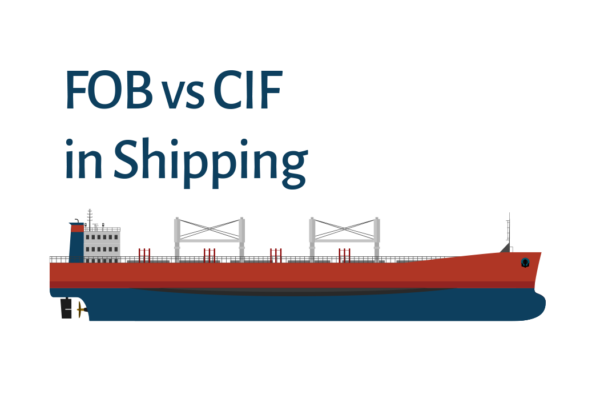In shipping, COA is a Contract of Affreightment. This contract plays a vital role in bulk shipping. Many big companies in the bulk shipping industry use this type of contract. It helps protect them from changes in freight rates over time.
A COA is a type of chartering contract. It involves the transportation of a specified quantity of cargo over a set period. Unlike other shipping agreements, a COA does not tie to a specific vessel. They mainly fix it with a TBN basis ship, which represents the specifications of the suitable ships for the trade.
Instead of a single voyage(for example, voyage chartering), it covers a series of shipments. This flexibility is a key feature of COAs. It allows charterers to schedule multiple shipments over time.
The most important part of a COA is that it somehow hedges the freight rate with different methods. One common method fixes the freight payment rate regardless of market fluctuations. Another one is that a fixed Baltic Index calculates the freight rate, depending on the ship type and trade zone. The chart below illustrates a fixed Baltic Dry Index (BDI)-based two example contract in real data.

As shown, COA 1 was agreed at a lower index level—around 1,200 points, while COA 2 was fixed later at approximately 1,400 points. The blue line represents the actual Baltic Dry Index between January and June 2025. During the early months, spot market levels remained below both contract rates, favoring COA 1 significantly and offering a hedge against weak market conditions. However, as the market recovered and the index surged beyond 1,600 by June, COA 2 became more attractive, outperforming spot rates and demonstrating strong timing in its execution.
This chart clearly visualizes how the timing of a COA can play a critical role in managing freight exposure. By aligning contract terms with index levels, shipowners and charterers can strategically balance risk and opportunity—either locking in rates during low markets or capturing upward trends when indicators forecast improvement. Ultimately, the decision between fixed-rate COAs and index-linked ones depends on market outlook, operational planning, and the risk appetite of the parties involved.
Contract of Affreightment (COA) refers to an agreement where the shipowner undertakes to carry quantities of a specific cargo on a particular route or routes over a given period of time using ships of their choice within specified restrictions (Stopford, Maritime Economics, 3rd ed).
COAs are commonly used for bulk cargoes. These include commodities like oil, coal, and grain. The contract outlines the responsibilities of both the shipper and the carrier.
This includes details on loading and unloading procedures. COAs can optimize shipping routes. They allow for adjustments based on market conditions and cargo availability.
Shipping company executives find COAs beneficial. They offer cost efficiency and effective logistics planning.
- Total Volume Commitment
- Shipment Schedule and Flexibility
- Port and Route Specifications
- Freight Rate Structure (Fixed or Indexed)
- Performance and Commercial Terms
This article will explore the specifications of COAs, providing insights for all stakeholders in the maritime industry.
Understanding the Contract of Affreightment (COA)
The Contract of Affreightment is a pivotal agreement in the maritime sector. It specifies the transportation of a defined amount of cargo over a predetermined duration. This contract allows an advantageous way to ship materials for companies that need a steady flow of cargo at a fixed rate.
Unlike a voyage charter, the COA does not fix shipments to a particular vessel. Instead, it uses a series of shipments. This flexibility allows charterers to adapt to varying freight costs.
A COA is highly beneficial for industries dealing with bulk materials. Common commodities include oil, coal, grain, cement and clinker. These goods require regular and often large-scale transportation from the source to where it is needed.
Key parties involved in a COA are the charterer and the shipowner. The agreement defines their respective responsibilities. These might include duties related to loading, transport, and discharge.
Several factors make COAs distinct within shipping terms. One notable aspect is its adaptability to market changes. By not binding to a specific vessel, adjustments in routes and schedules are easier.
Below are some primary attributes of a COA:
- Flexibility: Allows for variable timing and scheduling of shipments.
- Volume: Specifies a total quantity of cargo to be transported.
- Duration: Covers an extended period, unlike single-voyage charters.
- Responsibility: Detailed roles for both shippers and carriers.
For businesses, a COA can secure long-term freight rates. This helps in mitigating market rate volatility. However, achieving a successful COA requires careful negotiation.
Understanding these features helps chartering managers, shippers, and receivers streamline operations. It also aids maritime lawyers in offering precise advice. By grasping these elements, stakeholders in the shipping industry can better navigate complex agreements and foster efficient shipping practices.
Who is a Ship Charterer?
A ship charterer hires vessels to transport cargo and manages logistics under voyage, time, or bareboat charters. Understanding their role and contract terms is essential in maritime shipping.
How a COA Works: Process and Structure
A Contract of Affreightment is more than a shipping deal—it’s a bold agreement to face the rough seas of global trade. Like a ship battling huge waves, it starts with strong negotiations between the shipowner and the charterer. Together, they set a clear course to move cargo through changing markets and challenges. It’s a commitment to stay steady, no matter how stormy the waters get.
Central to this arrangement is the predetermined volume and schedule of cargo shipments as well as the number of shipments. The charterer commits to providing specific quantities over a defined period.
The COA structure provides flexibility, as it does not bind shipments to a specific vessel. Instead, shipowners can use different ships based on availability and operational needs. This flexibility is a significant advantage, especially when dealing with market fluctuations.
Cargo handling responsibilities are carefully outlined in the COA. Both parties must agree on the procedures for loading and unloading. This clarity helps avoid disputes and ensures smooth transactions. As well as the LayCan notice terms are incldued in the COA as well.
Typically, COAs incorporate performance metrics. These metrics ensure compliance with the agreement and facilitate monitoring. They can include timelines for cargo delivery and penalties for delays.
Below are some primary attributes of a COA:
- Flexibility: Allows for variable timing and scheduling of shipments.
- Volume: Specifies a total quantity of cargo to be transported.
- Duration: Covers an extended period, unlike single-voyage charters.
- Responsibility: Detailed roles for both shippers and carriers.
For businesses, a COA can secure long-term freight rates. This helps in mitigating market rate volatility. However, achieving a successful COA requires careful negotiation.
Understanding these features helps chartering managers, shippers, and receivers streamline operations. It also aids maritime lawyers in offering precise advice. By grasping these elements, stakeholders in the shipping industry can better navigate complex agreements and foster efficient shipping practices.
Here’s an outline of the COA process:
- Negotiation: Discussions between charterer and shipowner to agree on terms.
- Volume and Schedule: Establish total cargo quantity and delivery timelines.
- Vessel Selection: Use of multiple ships based on needs.
- Cargo Handling: Clearly defined loading and unloading procedures.
- Performance Metrics: Standards for compliance and timeliness.
The COA’s structure is designed to accommodate the unpredictable nature of shipping. By maintaining flexible operations and clear responsibilities, COAs support efficient logistics planning. This structured approach makes COAs a valuable tool in the maritime industry. It ensures both reliability and adaptability, paving the way for successful partnerships.
COA vs. Other Shipping Contracts: Charter Parties and Bills of Lading
In the shipping industry, various contracts govern the transportation of goods. A Contract of Affreightment (COA) is just one of these. It’s important to differentiate the COA from other common shipping agreements, such as Charter Parties and Bills of Lading.
Charter Parties represent agreements where a specific vessel is leased for a particular voyage or period. Unlike COAs, which involve multiple shipments and no specified vessel, Charter Parties are tied to one ship. This singular focus often limits flexibility for shippers.
What is a Charter Party in Shipping?
A charter party is a maritime contract that defines the terms and responsibilities between shipowners and charterers. More about Charter Party.
Charter Parties are divided into two main types: voyage charters and time charters. Voyage charters involve a single trip between designated ports, while time charters permit ship use for a predetermined period. Both differ significantly from the open-ended nature of COAs.
A Bill of Lading functions as a receipt for shipped goods. It also acts as a title and a contract between the carrier and shipper. This document specifies the shipped cargo, with significant legal power in disputes. However, it differs from COAs by managing single shipment transactions rather than long-term arrangements.
Each shipping term serves its purpose, depending on specific needs. A comparison helps clarify these differences:
Advantages of Using a Contract of Affreightment
A Contract of Affreightment (COA) presents several notable advantages. These benefits make it an attractive option for shippers needing reliability and cost-efficiency. Let’s explore some key advantages.
Firstly, COAs offer enhanced flexibility in scheduling shipments. This allows shippers to adjust their logistics plans based on cargo availability and market conditions. It aids in optimizing shipping routes and reducing delays.
Another benefit involves cost predictability. COAs enable shippers to lock in freight rates over time, shielding them from market fluctuations. This stability helps companies better manage budgets and improve financial planning.
Shippers can also enhance operational efficiency through COAs. By scheduling multiple shipments in advance, companies reduce the administrative burden of negotiating separate contracts for each voyage. This streamlined process saves time and resources.
A COA also fosters long-term relationships between shipowners and carriers, benefiting both parties. This collaboration can result in more favorable terms and improved service levels. It establishes a reliable partnership foundation.
Moreover, by using COAs, companies benefit from optimized fleet utilization. Carriers can plan vessel deployment more effectively, reducing idle time and increasing profitability. This efficiency contributes to the overall success of shipping logistics.
Finally, the use of COAs increases resilience against supply chain disruptions. The flexibility to adjust shipping schedules ensures continuity in operations, even in unpredictable circumstances. This reliability is crucial in maintaining customer satisfaction.
Evaluating whether a Contract of Affreightment suits your needs involves considering your shipping patterns and goals. If you have consistent bulk cargo shipments and require predictable costs, a COA might be ideal.
COAs provide advantages, such as cost certainty and scheduling flexibility. However, they require careful negotiation and market analysis to mitigate potential risks like rate fluctuations.
Engaging experts such as maritime lawyers or logistics managers is crucial. Their insights can guide you in crafting a COA that aligns with your operational and financial objectives. Ultimately, opting for a COA depends on weighing its benefits against your specific shipping logistics requirements.






